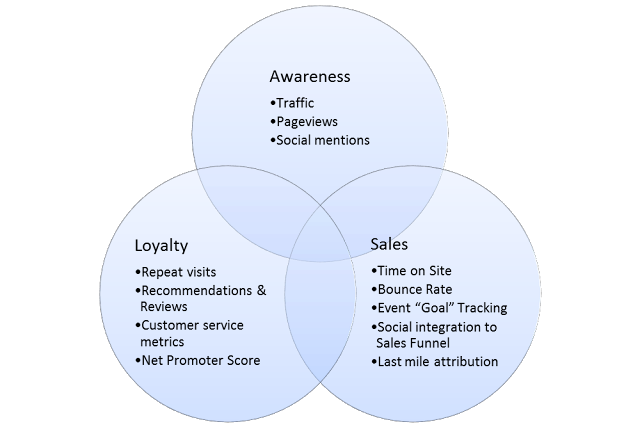By Miva | February 4, 2014

See why top ecommerce brands use Miva’s no-code platform to run
multiple stores, manage massive catalogs, and grow their revenue.
How does this affect your social media strategy? Is social media even worth it, if it’s not driving ecommerce sales?
Let’s take a deeper look into this topic:
Social media isn’t about sales today; it’s about driving sales in five, 10 or 15 years.”
This news is not new, considering that last year, IBM reported that there was almost no effect on sales by social networks – 0.34% to be exact. This year, IBM took a fresh look at the numbers to see how they measured up. After researching over 800 ecommerce websites, IBM still found that only 1% of visits come directly from social media. Only a fraction of those visits turn into conversions.
“I don’t think the implication is that social isn’t important,” said Jay Henderson, strategy director for IBM, “But so far it hasn’t proven effective to driving traffic to the site or directly causing people to convert.”
Don’t delete your Facebook and Twitter accounts just yet, though. There are a few important caveats to this story:
DataSift disputed IBM’s findings last year, when they noticed marketers were beginning to get the wrong impression about social media marketing. They argued that IBM was measuring the wrong thing. In their research, DataSift found that social media traffic is in fact a key driver for ecommerce sales.
Rachel Strugatz, digital market editor for WWD, wrote that social media is more about building brand awareness and a community around a brand, than it is about driving transactions. “Social media isn’t about sales today;” Rachel said, “it’s about driving sales in five, 10 or 15 years as the Internet-mad generation of twenty-somethings matures.”
There’s only one problem: For now, there isn’t a universal metric to measure the ROI. That, coupled with Facebook’s IPO flop, is starting to give social media a bad rap, said Maureen Mullen, New York University think tank Luxury Lab director of research and advisory.
What we’re learning here is not to focus so much on the visits you get from social media, but rather the engagement levels you have with your customers. When a customer “likes” your brand on Facebook or “follows” your brand on Twitter, they are essentially raising their hand, saying, “Yes, I am interested in your brand, and I plan on shopping at your store.” While these conversions may not be directly from the social media platform, every interaction you have with that consumer will just bring them one step closer to purchasing from your online store.
Loyal customers are by far the most valuable to any online merchant, so it is not about converting individuals, but keeping that loyalty alive through customer relationships. Engaging customers on social media creates a sense of connection with your brand. Social media marketing is more about building a lasting connection with your customers and building up customer loyalty.
If you have 5,000 visitors to your website each day, then a 1% conversion rate is not that bad. That would mean social media is sending around 50 new customers to your site daily. That could translate to 20 extra sales per month. Plus, many other transactions are likely from the relationship building process and not directly coming from social media.

In conclusion, having a social media strategy for your ecommerce store is still extremely important for driving sales, even if you can’t measure it. Social media does drive online sales, indirectly.
Back to topNo worries, download the PDF version now and enjoy your reading later...
Download PDF Miva
Miva
Miva offers a flexible and adaptable ecommerce platform that evolves with businesses and allows them to drive sales, maximize average order value, cut overhead costs, and increase revenue. Miva has been helping businesses realize their ecommerce potential for over 20 years and empowering retail, wholesale, and direct-to-consumer sellers across all industries to transform their business through ecommerce.
Visit Website